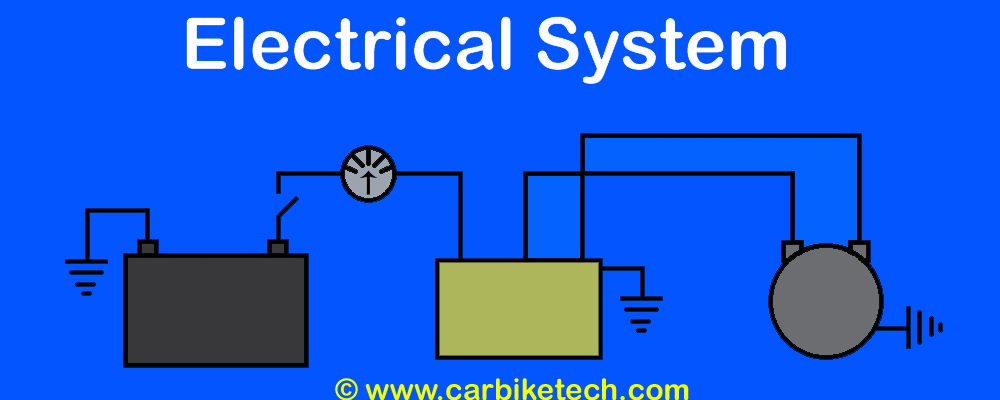Vehicle Electrical System:
The vehicle electrical system comprises many components. They include generators, electric wiring harnesses, connectors, and many more. Over the period of time, the electrical system got updates, upgrades, and additions. However, it is mainly because the number of components operating on electric power increased, and therefore, the power consumption increased substantially.
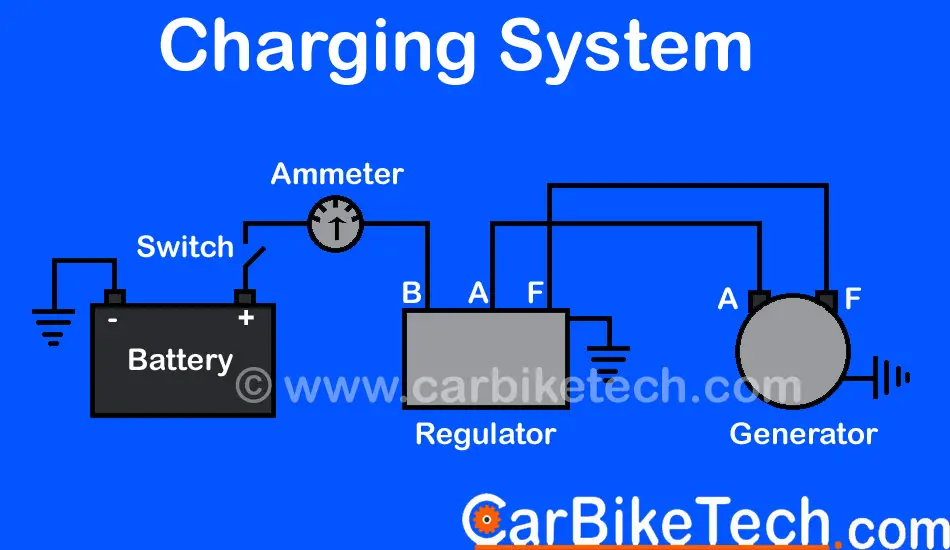
The electrical system’s primary function is to generate, store and supply the electric current to various vehicle systems. In addition, it operates the electrical components/parts in vehicles. These components include several electrical gauges, digital gadgets, power windows, central locking mechanisms, and many more.
Most components of the earlier-generation vehicles were predominantly mechanical in nature and operation. Over time, these components started operating electrically/electronically, shedding the purely mechanical function that the earlier vehicles used. Nowadays, the majority of vehicular systems have an electric function for ease of operation and precision control. Even more advanced steering systems such as Electric Power-Assisted Steering (EPAS) also operate by electric power. Hence, the engineers felt the need for consistency in generating electric power. So, they employed different mechanisms to generate, regulate, store and supply the vehicles’ electric current effectively.
Negative Earth:
Earlier generation cars mostly used the positive ground in their electrical system. In this system, the battery’s positive terminal was attached to the chassis while the negative terminal was live. However, later this system was discontinued. Today, modern cars use the negative earth in their electrical system. Generally, most cars use the 12 Volts electrical system. However, some small bikes still use the 6 Volts system, whereas some commercial vehicles use the 24 Volts system.
The vehicle electrical system consists of following main components:
- Magneto
- Generator
- Alternator
- Cut Out/Voltage Regulator
- Battery
Vehicle Electrical System: Magneto
Magneto is an electric device that generates periodic pulses of alternating current. However, it uses permanent magnets. The magneto does not have a ‘commutator’ that produces the direct current (DC) like a Dynamo. Manufacturers classify the magneto as a type of alternator. However, it is different from other alternators, which use field coils instead of permanent magnets.
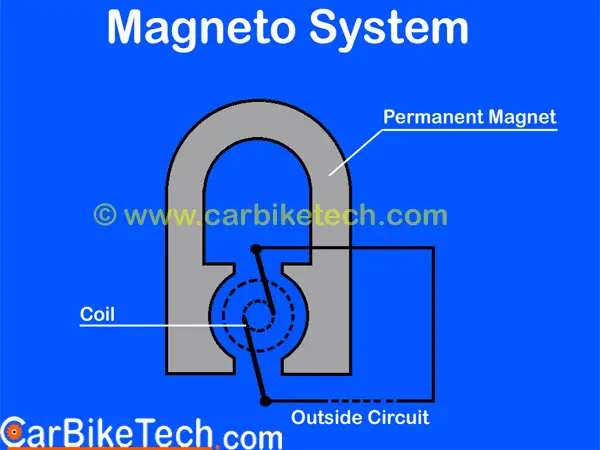
Many devices used hand-cranked magneto generators in earlier days, which produced an electric current. Later, automotive manufacturers employed magnetos to produce high voltage pulses in petrol engines’ ignition systems. These pulses were responsible for supplying the electric current to spark plugs.
The magneto has following parts:
- Set of permanent magnets
- Coil
- Cranking mechanism (Usually a kick in a motorcycle)
Thus, magneto converts the engine’s mechanical energy into electrical energy to run the engine uninterruptedly. Magneto’s magnetic field strength is constant. The main advantage of the magneto is that its output is steady regardless of load variations. However, if the engine shuts down, it again needs external input to restart.
Today, the use of such magnetos for ignition is minimal. However, few motorcycles, small bikes, and quads still use the magneto system. The main advantage of this system is reduced weight. Initially, it would help if you had the input from the battery to start the engine. Then, the magneto generates electrical energy from the mechanical energy input.
Vehicle Electrical System: Dynamo/Generator
A Dynamo/Generator is a device that converts mechanical energy into electrical energy. It supplies the electrical energy for charging the battery of a vehicle. The generator gets the drive from the engine, generally thru’ the fan belt. In earlier generation vehicles, you can see this type of arrangement. The speed of the generator largely depends on the speed of the engine. As the engine speed increases, so does the speed of the generator. Therefore, it varies significantly throughout the engine’s speed, corresponding to its powerband. However, the situation demands that the generator output should remain nearly constant.
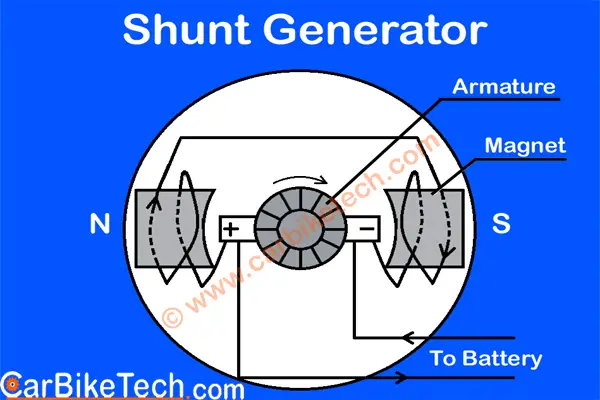
Also, another name for the automotive Generator is Dynamo. Furthermore, the automotive generator produces Direct Current (DC). It is because the electric components need the Direct Current to function. Automotive applications most commonly use generators made of shunt winding. Initially, manufacturers employed generators to produce direct current (DC), which the other electrical components/gadgets could directly use/consume. However, the alternator now replaced the generator, generating alternating current (AC). It then converts the AC into the Direct Current (DC) with the help of diodes.
The main components of a generator are:
- Frame
- Armature
- Field coils
Vehicle Electrical System: Alternator
The alternator is also known as the AC Generator. It is a device that produces an alternating current (AC) instead of a direct current (DC). Hence, manufacturers know & call it an alternate. And it works on the same principle. In the early 60s, the alternator replaced the DC Generator because of its distinct advantages over the latter.
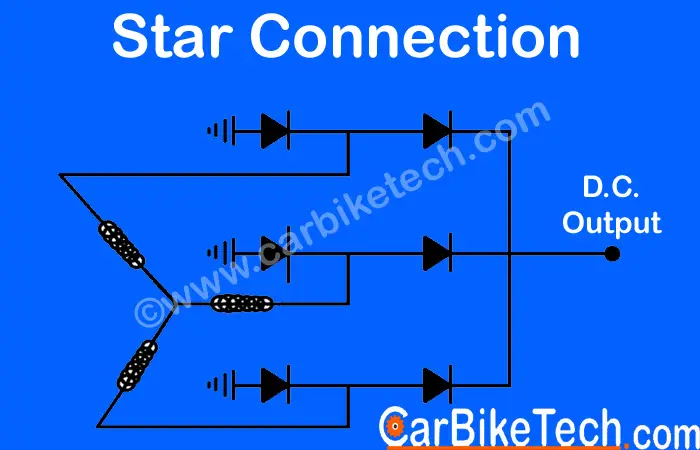
However, the automotive electrical system only uses the Direct Current. So, you need a mechanism to convert the alternating current to a direct current. For example, an alternator converts the alternating current (AC) to direct current (DC) with diodes’ help.
The main components of an alternator are:
- Frame or housing
- Rotor (with electromagnets)
- Stator
- Slip ring and bushes
Vehicle Electrical System: Cut-Out Relay
The Cut-Out mechanism regulates and cuts out the current output going to the battery. When the engine runs at very slow speeds, the generator output is usually lower than the battery output voltage of 12 volts. Hence, it is insufficient to charge the battery.
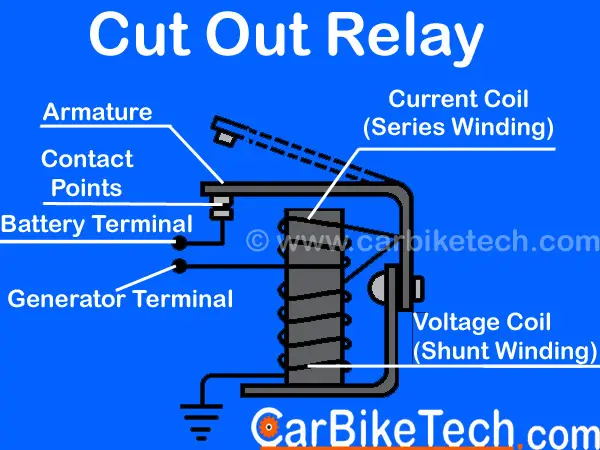
In such a scenario, the battery starts to drain into the generator because the battery voltage is higher than the generator output. Manufacturers employ a voltage regulator/ Cut-Out to prevent the battery from draining off; manufacturers use a voltage regulator/Cut-Out. It connects/disconnects the generator from the battery.
When the generator output is lower than the battery voltage, it disconnects the generator from the battery. In contrast, it connects the generator back to the battery when the output is higher. Thus, it prevents the battery from discharging at slow engine speeds.
Vehicle Electric System: Battery
The primary purpose of a battery is to store the electrical energy in the DC form for future use. A car or motorcycle battery is like any other battery with positive and negative poles. Modern vehicles use negative earth technology. The positive pole represents the South Pole, while the negative one represents the North. The positive terminal is generally bigger in diameter than the negative terminal. Thus, it is to prevent it from being potentially fitted in the wrong way.
Electric Vehicles use more advanced type ‘Lithium-Ion’ or ‘Li-Ion’ batteries. These batteries can store more current and take less time to charge than conventional batteries. In addition, the Li-ion batteries have high energy density and low self-discharge properties. Hence, they offer extended hours of operation before needing the re-charge.
Bosch, Denso, Lucas, and Motherson Sumi are some of the vehicles suppliers of vehicle electrical systems.
Watch vehicle electrical system in action here:
Read On: Electric Road Is Here
